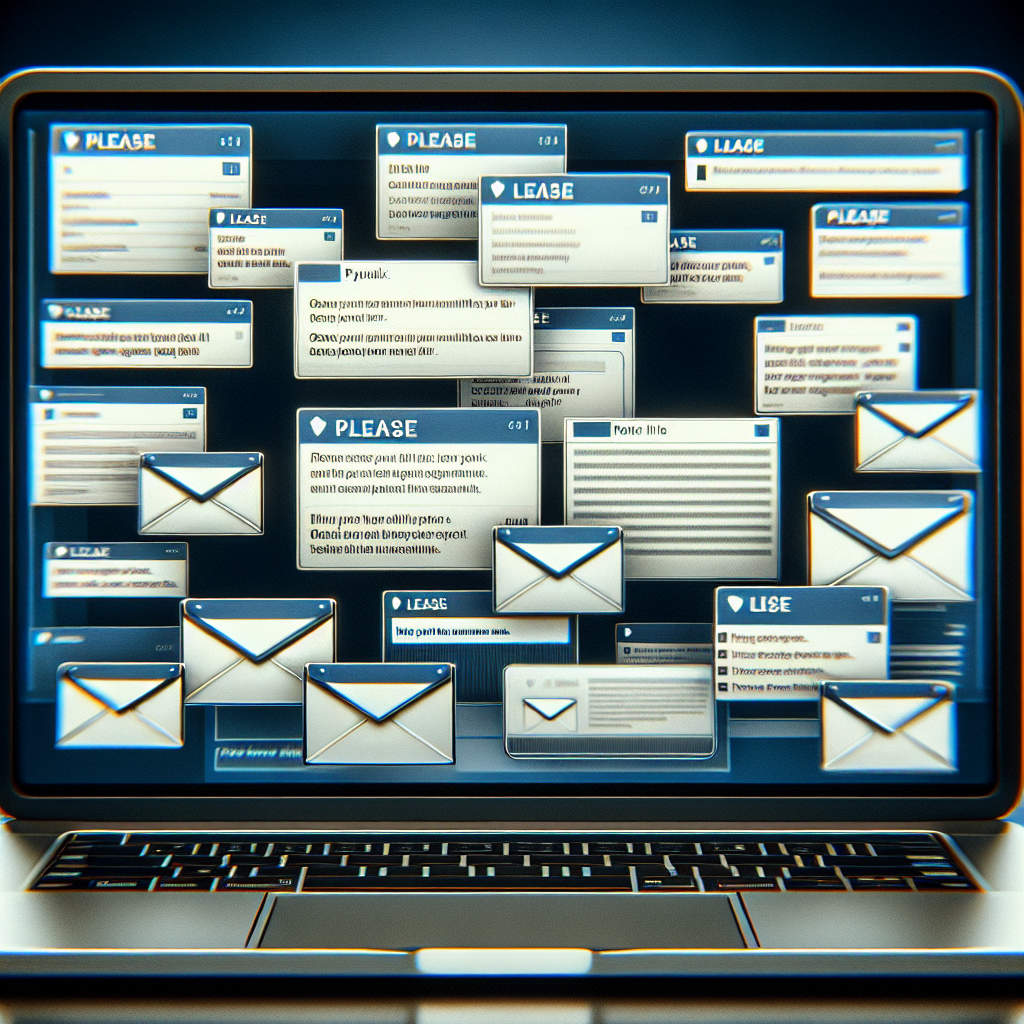Imagine being able to reach your target audience directly in their inbox, with personalized and engaging content that captures their attention and drives them to take action. An email marketing campaign can do just that. In this article, we will explore an example of an email marketing campaign that demonstrates the power and effectiveness of this strategy. From crafting compelling subject lines to creating visually appealing designs, this campaign showcases the potential of email marketing to connect with your audience and achieve your marketing goals. So, get ready to be inspired and learn how to create your own successful email marketing campaign.
What is an Email Marketing Campaign?
Definition
An email marketing campaign is a strategic approach to marketing and promoting products or services through email communication. It involves sending targeted emails to a specific group of individuals with the goal of increasing brand awareness, driving traffic to a website, generating leads, or converting leads into customers.
Purpose
The purpose of an email marketing campaign is to establish and maintain a strong connection with the target audience. By delivering relevant and valuable content directly to their inbox, businesses can build trust and credibility, nurture leads, and encourage repeat purchases or conversions.
Benefits
Email marketing campaigns offer several benefits for businesses. Firstly, they provide a cost-effective way to reach a large number of people instantly, especially when compared to traditional advertising methods. Additionally, emails can be personalized and tailored to specific individuals or segments, ensuring that the messages are more relevant and impactful. Email campaigns also allow for precise tracking and analysis of key metrics, enabling businesses to measure the success of their efforts and make data-driven decisions to improve future campaigns.
Key Components of an Email Marketing Campaign
Target Audience
Identifying and understanding the target audience is crucial for the success of an email marketing campaign. Businesses need to define their ideal customer profile and segment their audience based on relevant characteristics such as demographics, interests, purchase history, or engagement levels. By tailoring the content and messaging to specific segments, businesses can increase the relevance and effectiveness of their email campaigns.
Email Content
Compelling and engaging content is the heart of any email marketing campaign. Emails should be well-written, informative, and valuable to the reader. Businesses can use a variety of content formats such as newsletters, product updates, blog posts, case studies, or promotional offers. The key is to provide content that resonates with the target audience and delivers value, whether through entertainment, education, or utility.
Call to Action
Every email should have a clear and compelling call to action (CTA) that prompts the recipient to take a specific action. The CTA could be to visit a website, download a resource, make a purchase, or sign up for an event. It is important to make the CTA stand out visually and use persuasive language to motivate the reader to click or engage.
Design and Layout
The design and layout of an email can greatly impact its effectiveness. Emails should have a clean and professional appearance, with a visually appealing and cohesive design that aligns with the brand identity. It’s important to use images, graphics, and colors strategically to enhance the message and draw attention to important elements. Additionally, the layout should be easy to scan and navigate, with a clear hierarchy of information to guide the reader.
A/B Testing
A/B testing is a valuable technique in optimizing the performance of an email marketing campaign. By creating variations of emails and testing them on a smaller sample of the target audience, businesses can gather data and insights to determine which elements are most effective. This could include testing different subject lines, CTAs, content formats, or design elements. A/B testing allows for continuous improvement and optimization of email campaigns.

Planning and Preparing for an Email Marketing Campaign
Setting Goals
Before launching an email marketing campaign, it is crucial to define clear and measurable goals. These goals could include increasing website traffic, generating leads, boosting sales, or improving customer engagement. Setting specific and realistic goals helps businesses stay focused and evaluate the success of their email campaigns accurately.
Defining Objectives
In addition to the overall goals, it is important to establish specific objectives for each email campaign. These objectives could be to introduce a new product, promote a limited-time offer, announce an event, or nurture leads through a drip campaign. Clear objectives guide the content creation process and ensure that emails are tailored to achieve specific outcomes.
Building a Subscriber List
To launch a successful email marketing campaign, businesses need to build a quality subscriber list. There are several strategies to collect email addresses, such as offering gated content, providing incentives for sign-ups, or leveraging social media platforms. It is essential to obtain consent from subscribers and comply with relevant data protection regulations, such as the General Data Protection Regulation (GDPR). Growing a subscriber list ensures a larger reach for the campaign and increases the potential for conversions.
Segmentation
Segmentation is the process of dividing a subscriber list into smaller, more targeted groups based on specific criteria. By segmenting the audience, businesses can deliver highly tailored and personalized content that resonates with each segment. Segmentation can be based on demographics, purchase behavior, engagement levels, or any other relevant data. This helps ensure that the right message reaches the right audience, improving the effectiveness of the email campaigns.
Crafting Effective Email Messages
Subject Line
The subject line is one of the most critical elements of an email as it determines whether the recipient opens the email or not. It should be attention-grabbing, concise, and give the reader a reason to open the email. Personalization or including a sense of urgency can be effective techniques to increase open rates. It’s important to avoid using spam-triggering words or phrases to prevent the email from ending up in the recipient’s spam folder.
Personalization
Personalization is a powerful tool in email marketing campaigns. By addressing recipients by their name and tailoring content based on their preferences or behavioral data, businesses can make emails more relevant and engaging. Personalization can extend beyond just the salutation and can include product recommendations, location-specific offers, or exclusive content based on the recipient’s interests or past interactions with the brand.
Content Structure
The structure of an email should be clear and easy to follow. Using headings, subheadings, and bullet points can help break up the content and make it scannable. It’s important to prioritize the most important information and place it at the beginning of the email. The content should provide value to the reader and be focused on the objective of the email as well as the needs and interests of the audience.
Copywriting
Compelling copy is crucial for engaging the reader and motivating them to take the desired action. The copy should be concise, persuasive, and communicate the benefits or value of the product or service. Including storytelling elements or social proof can make the content more relatable and trustworthy. It’s important to maintain a friendly and conversational tone of voice throughout the email to establish a genuine connection with the reader.
Visuals and Media
Incorporating visuals and media into emails can make them more visually appealing and engaging. Including relevant images, videos, or infographics can help convey the message effectively and capture the reader’s attention. It is important to optimize the file sizes for quick loading and ensure that the media is compatible with different email clients and devices. Alt tags should also be used for images to provide context for visually impaired recipients or in case images cannot be loaded.

Creating Engaging Email Designs
Branding Elements
The design of an email should be consistent with the overall brand identity to create a cohesive and recognizable experience for the recipient. Incorporating branding elements such as the company logo, color palette, typography, or brand voice helps reinforce brand recognition and trust. It’s important that the design elements align with the brand’s personality and evoke the desired emotions or associations.
Responsive Design
With the increasing use of mobile devices, it is crucial to ensure that emails are optimized for different screen sizes. Responsive design allows emails to adapt and display correctly on various devices and email clients. This includes using single-column layouts, larger font sizes, and easily tappable buttons or links. Testing emails on different devices and using responsive design frameworks can help ensure a consistent and user-friendly experience.
Whitespace and Organization
Whitespace refers to the empty space between elements in an email. It is essential to utilize whitespace effectively to create a visually appealing and organized layout. Adequate whitespace helps improve readability, draw attention to important elements, and reduce cognitive load for the reader. By organizing the content with clear headings, subheadings, and bullet points, businesses can make the email easier to scan and navigate.
Colors and Fonts
Colors and fonts play a significant role in creating a visually appealing email design. It’s important to use colors that align with the brand’s visual identity and evoke the desired emotions or associations. The font choices should be legible and complement the overall design. It’s best to limit the number of fonts used to maintain consistency and avoid visual clutter. Testing the email design across different email clients and devices ensures the colors and fonts display correctly.
Images and Graphics
Using high-quality images and graphics can enhance the visual appeal of an email and effectively convey the message. It’s essential to choose images that are relevant to the content and resonate with the target audience. Images should be properly sized, compressed, and optimized for quick loading. Alt tags should also be included to provide context and ensure a meaningful experience for visually impaired recipients.
Optimizing Email Content for Deliverability
Maintaining a Clean Email List
Maintaining a clean and well-maintained email list is crucial for email deliverability and sender reputation. Regularly removing bounced email addresses, inactive subscribers, or those who have unsubscribed ensures that the email list remains relevant and engaged. Implementing a double opt-in process can also help verify the email addresses and reduce the chances of sending emails to invalid or spam trap addresses.
Avoiding Spam Filters
To avoid triggering spam filters, it is important to follow email best practices. This includes refraining from using spammy language, excessive capitalization, or large amounts of exclamation marks in the subject line or body of the email. It’s best to use a reputable email service provider that has robust spam filter testing and can provide guidance on best practices. Including a clear and easy-to-find unsubscribe option also helps build trust and compliance.
Testing Email Deliverability
Before sending an email campaign to the entire subscriber list, it is crucial to test the email deliverability. This involves sending test emails to various email clients, including popular ones like Gmail, Yahoo, and Outlook, to ensure the emails display correctly and do not trigger any spam flags. Testing can also involve verifying that links, images, and CTAs work as intended. By conducting thorough testing, businesses can identify and address any issues before the email reaches the subscribers.
Analyzing and Measuring the Success of Email Campaigns
Metrics to Track
To evaluate the success of an email campaign, businesses should track and measure key metrics. Some important metrics to consider include open rate, click-through rate (CTR), conversion rate, bounce rate, and unsubscribe rate. These metrics provide insights into the engagement, effectiveness, and overall impact of the email campaign.
Conversion Rate
The conversion rate measures the percentage of recipients who took the desired action after opening the email. This action could be making a purchase, filling out a form, signing up for a trial, or any other predefined goal. Tracking the conversion rate helps businesses assess the effectiveness of their email content, CTAs, and overall campaign strategy.
Open and Click-Through Rates
The open rate indicates the percentage of recipients who opened the email, while the click-through rate measures the percentage of recipients who clicked on a link or CTA within the email. These metrics provide insights into the effectiveness of the subject line, preview text, and overall email content in grabbing attention and encouraging engagement. Monitoring these rates helps businesses identify areas of improvement and optimize future campaigns.
Unsubscribe Rate
The unsubscribe rate measures the percentage of recipients who decided to unsubscribe from the email list after receiving a particular email. A high unsubscribe rate may indicate a mismatch between the content and the audience’s expectations or dissatisfaction with the overall email program. It’s important to monitor this metric and take steps to address any issues or concerns raised by the recipients.
Bounce Rate
The bounce rate measures the percentage of emails that were not delivered successfully to the recipient’s inbox. Bounces can be categorized as either hard bounces (permanent delivery failures) or soft bounces (temporary delivery failures). Monitoring the bounce rate helps businesses identify and address any potential issues with the email list, sender reputation, or email infrastructure.
Automation and Personalization in Email Marketing
Automated Email Sequences
Automated email sequences, also known as drip campaigns, are a valuable tool in email marketing. These sequences allow businesses to send pre-determined emails triggered by specific user actions or time intervals. For example, an e-commerce business can set up a welcome series that sends a series of emails to new subscribers, gradually introducing them to the brand and promoting relevant products. Automation saves time and ensures consistent and timely communication with the audience.
Dynamic Content
Dynamic content refers to email content that is personalized and customized based on the recipient’s preferences, behavior, or other data points. This can include displaying different product recommendations, promotional offers, or call to actions based on the recipient’s past purchases or browsing history. Dynamic content allows for a highly personalized and relevant email experience, increasing engagement and conversion rates.
Behavioral Triggers
Behavioral triggers are specific actions or events that prompt automated emails to be sent. These triggers can include actions such as abandoning a shopping cart, visiting a specific website page, or not opening emails for a certain period. By leveraging behavioral triggers, businesses can respond to the recipient’s actions in a timely and targeted manner, delivering personalized content that addresses their specific needs or interests.
Best Practices for Email Marketing Campaigns
Complying with GDPR
When conducting email marketing campaigns, it is crucial to comply with relevant data protection regulations, such as the General Data Protection Regulation (GDPR). This includes obtaining explicit consent from subscribers, providing transparency about data usage and storage, and offering easy opt-out options. Adhering to GDPR not only ensures legal compliance but also builds trust and credibility with subscribers.
Opt-in and Opt-out Options
Providing clear and transparent opt-in and opt-out options is essential for maintaining a positive relationship with subscribers. Allowing users to choose whether to receive emails and giving them a straightforward way to unsubscribe demonstrates respect for their preferences. It’s important to make the opt-out process simple and hassle-free to avoid negative experiences that could damage the brand reputation.
Personal Data Protection
Safeguarding personal data is a fundamental responsibility in email marketing campaigns. Businesses should ensure that subscriber data is stored securely, protected from unauthorized access, and only used for the intended purposes. Implementing robust security measures and following data protection best practices helps build trust with subscribers and ensures compliance with relevant regulations.
Email Etiquette
Following proper email etiquette is crucial for maintaining a positive relationship with subscribers. This includes using a friendly and respectful tone in email communications, addressing recipients by their preferred name, and responding promptly to any inquiries or concerns. It’s also important to avoid sending excessive or irrelevant emails, as this can lead to frustration and unsubscribes.
Examples of Successful Email Marketing Campaigns
Campaign A: Company X Newsletter
Company X, a technology blog, sends out a weekly newsletter to its subscribers. The newsletter includes a roundup of the latest articles published on their website, along with a brief summary and link to each article. The email is well-designed, with a clean layout and consistent branding elements. It also includes a prominent CTA encouraging readers to visit the website to read the full articles. The campaign’s success is measured through open and click-through rates, as well as an increase in website traffic and user engagement.
Campaign B: E-commerce Discount Offer
An online retailer launches a limited-time discount offer to promote a new product line. The email campaign includes personalized subject lines addressing the recipients by their name and highlights the exclusive offer. The email content is concise, highlighting the key features and benefits of the product. The design incorporates vibrant visuals and clear CTAs to encourage recipients to make a purchase. The effectiveness of the campaign is measured through the conversion rate, revenue generated, and customer feedback.
Campaign C: Event Invitation
A nonprofit organization hosts an annual fundraising gala and sends out personalized email invitations to its past donors and supporters. The email content includes a heartfelt message explaining the importance of the event and the impact of their support. The design features images from previous events, showcasing the atmosphere and positive outcomes. The email includes a personalized CTA to RSVP and donate to the cause. The success of the campaign is measured through the response rate, attendance at the event, and the total amount raised.
In conclusion, an email marketing campaign is a powerful tool for businesses to connect with their target audience, drive engagement, and achieve specific goals. By understanding the key components of a successful email campaign, planning and preparing effectively, crafting compelling content, and optimizing for deliverability, businesses can create engaging email experiences that deliver measurable results. By embracing automation, personalization, and best practices, businesses can build strong relationships with their subscribers and achieve long-term success in email marketing.
